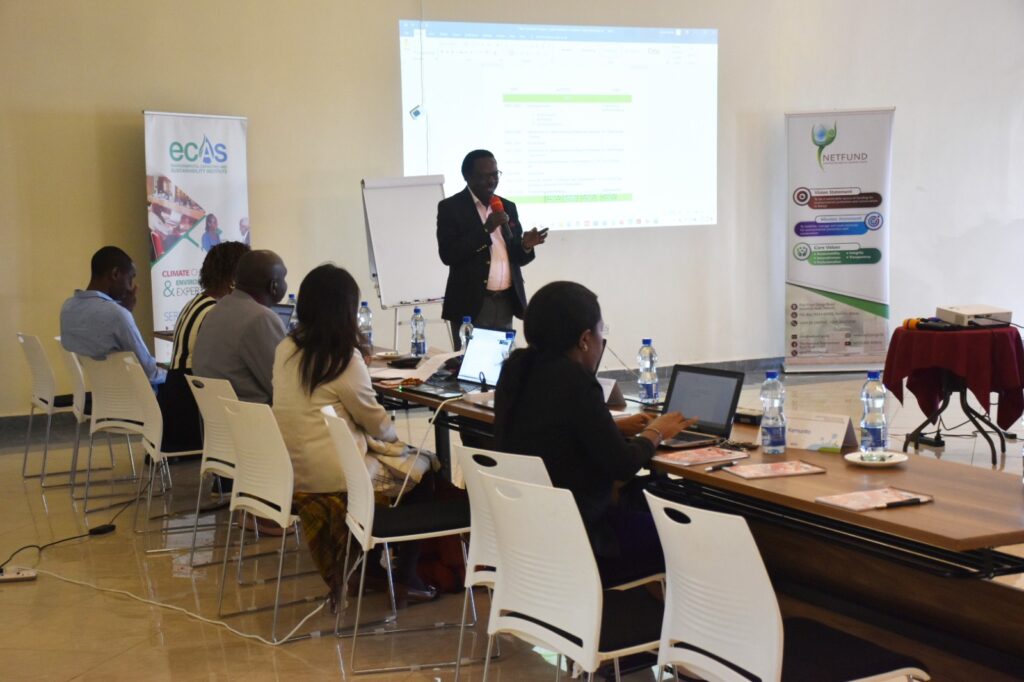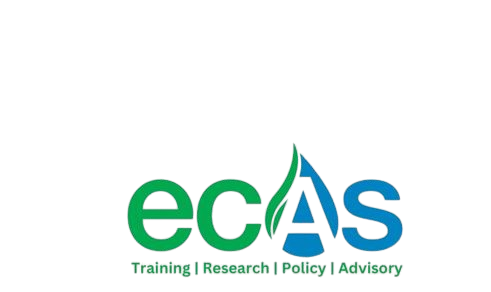
INTERNATIONAL TRAINING ON ENVIRONMENTAL IMPACT ASSESSMENT (EIA)
BACKGROUNDS
Environmental Impact Assessment (EIA) is a critical tool in sustainable development, ensuring that potential environmental effects of proposed projects are identified and addressed before implementation. The International Training on Environmental Impact Assessment (EIA) course offered by ECAS Institute is designed to equip professionals with the knowledge, skills, and methodologies required to conduct effective EIAs in compliance with international and national regulations.
With increasing global concerns over environmental degradation, climate change, and resource depletion, EIAs have become a mandatory requirement in many countries for major infrastructure, industrial, and development projects. This course provides a structured approach to assessing environmental risks, evaluating alternatives, and implementing mitigation measures to minimize negative impacts.
OBJECTIVES OF THE TRAINING
The International Training on Environmental Impact Assessment (EIA) course aims to equip participants with the necessary knowledge and skills to effectively conduct EIAs in accordance with international standards and best practices. The specific objectives of the course include:
- Provide a comprehensive understanding of the Environmental Impact Assessment process, its importance, and its role in sustainable development.
- Familiarize participants with international and national laws, regulations, and policies governing EIAs.
- Equip learners with scientific techniques and methodologies for assessing environmental impacts.
- Train participants on effective strategies for stakeholder participation, public consultation, and conflict resolution in EIA processes.
- Develop skills to propose effective mitigation measures, monitoring strategies, and adaptive management approaches for minimizing environmental risks.
- Guide participants in compiling and reviewing high-quality EIA reports that comply with regulatory requirements.
- Introduce the use of Geographic Information Systems (GIS) and other modern tools in environmental assessment.
WHAT YOU WILL LEARN
Participants will gain in-depth knowledge and practical skills in conducting Environmental Impact Assessments (EIA) to support sustainable development and regulatory compliance. Key learning areas include:
- Understanding the principles, purpose, and legal frameworks governing EIA processes.
- Learning various assessment techniques, including screening, scoping, impact prediction, and mitigation planning.
- Exploring national and international legal requirements for EIA compliance.
- Understanding the role of communities, government agencies, and other stakeholders in the EIA process.
- Evaluating potential environmental, social, and economic effects of development projects.
- Designing strategies to minimize or offset negative environmental impacts.
- Preparing effective Environmental Impact Statements (EIS) and recommendations for project approvals.
DURATION AND PROGRAM
(TBC)
TARGET PARTICIPANTS
The International Training on Environmental Impact Assessment (EIA) course is designed for professionals and stakeholders involved in environmental management, sustainable development, and regulatory compliance. It is particularly beneficial for environmental officers, project managers, policymakers, consultants, and government regulators who oversee or implement EIA processes. The course is also valuable for professionals from industries such as infrastructure, energy, mining, agriculture, and manufacturing, where environmental assessments are crucial for project approval and sustainability.
Additionally, researchers, academicians, and students specializing in environmental science, natural resource management, and sustainability studies will benefit from gaining practical insights into real-world EIA applications. The course is also suitable for non-governmental organizations (NGOs), community leaders, and advocacy groups involved in environmental protection and public participation in decision-making processes.
Overall, this course is ideal for anyone seeking to enhance their expertise in EIA methodologies, regulatory compliance, and sustainable development planning, whether in the public or private sector.
TRAINING MODULES
Environmental Impact Assessment (EIA) is a crucial process that helps identify and mitigate potential environmental and social impacts of development projects before they are implemented. It ensures that projects are environmentally sustainable and comply with legal and policy frameworks. This training is designed to equip participants with the knowledge and skills necessary to conduct EIAs effectively and in accordance with international best practices. The course follows a structured approach, covering key aspects such as stakeholder engagement, impact assessment techniques, environmental monitoring, and GIS applications in EIA.
| No | Module | Details | |
| 1. | Introduction to Environmental Impact Assessment (EIA) |
|
|
| 2. | EIA Legal and Policy Frameworks |
|
|
| 3. | The EIA Process and Methodologies |
|
|
| 4. | Public Participation and Stakeholder Engagement in EIA |
|
|
|
5.
|
Environmental Monitoring, Auditing, and Mitigation Measures |
|
|
| 6. | EIA Report Writing and Review |
|
|
| 7. | Application of GIS and Technology in EIA |
|
|
| 8. | Case Studies and Practical Applications |
|
|
| 9. | Final Assessment and Certification |
|
|
TRAINING STYLE
The International Training on Environmental Impact Assessment (EIA) course uses a mix of interactive and practical training methods to enhance learning. Expert lectures and presentations provide foundational knowledge on EIA concepts, legal frameworks, and best practices. These are reinforced with case studies and real-world examples, allowing participants to analyze successful and failed EIA projects.
Engagement is encouraged through group discussions and collaborative exercises, fostering teamwork, critical thinking, and experience sharing. Hands-on practical exercises, including field data collection, environmental monitoring, and GIS applications, help participants develop technical skills. Additionally, stakeholder engagement simulations train participants in public consultations, conflict resolution, and negotiation.
Where applicable, field visits provide firsthand exposure to EIA implementation, allowing participants to observe real-world processes. The course also includes EIA report writing and peer review, ensuring participants can prepare and evaluate high-quality reports. Finally, assessments and presentations allow participants to apply their learning through projects and receive feedback. This diverse training approach ensures participants gain both theoretical knowledge and practical expertise.
9. GENERAL NOTES
- Training manuals and additional reference materials are provided to the participants.
- Upon successful completion of this course, participants will be issued with a certificate.
- We can also do this as a tailor-made course to meet organization-wide needs. Contact us to find out more: info@ecasiafrica.org.
- Payment should be sent to our bank account before the start of training and proof of payment sent to: info@ecasiafrica.org.
ABOUT ECAS INSTITUTE
The ECAS Institute designs and delivers independent and targeted training, research, and consulting services. Our work focusses on climate change and resilience building, carbon markets, renewable energy, nature-based solution, biodiversity conservation, agriculture and food systems, We are located in Nairobi Kenya and work across the African region. We have implemented training and research assignments in Kenya, Tanzania, Uganda, South Sudan, Somalia, Malawi, Rwanda, Congo, and South Africa. Globally, we have supported our partners from the UK, Denmark, Italy, Sweden, Germany, and USA.
